If you’re an ecommerce business owner looking for an email marketing platform, you may have considered these two marketing ecosystem powerhouses: Omnisend and Privy.
Both platforms are among the top email marketing solutions in the industry, especially for users on Shopify and other top ecommerce hosting sites.
Each comes with unique features, advantages, and, of course, a few limitations.
For instance, Omnisend is a fast-rising software in the ecommerce space, known for its powerful features, customer support, and affordability. Privy, however, stands out for its ease of use and extensive signup form options.
But which software is ideal for your business, Omnisend or Privy?
This post discusses both platforms in detail to help you select one that best fits the needs of your ecommerce business.
Let’s get into it.
Privy vs Omnisend: Quick overview
Omnisend is currently one of the top email and SMS marketing platforms. The platform provides a powerful marketing automation feature, robust segmentation, excellent customer support, and beautiful newsletter templates, among other features.
This makes it suitable for ecommerce businesses of all sizes.
Privy, on the other hand, takes pride in being an easy-to-use, intuitive email marketing platform with powerful list-building and segmentation features. Its pricing is very reasonable for small businesses but grows exponentially when the list of subscribers increases.
Both tools integrate natively with top ecommerce marketing platforms like Shopify, Wix, and BigCommerce.
Both platforms have high ratings on the Shopify App Store. Omnisend has a 4.8-star rating, while Privy has a 4.6-star rating. This makes both tools great options for ecommerce store owners.
Here’s a summary table comparing Privy vs Omnisend features side by side.
From this table, it’s hard to tell each tool’s capabilities apart since they both have similar features. However, if you look closer, you can distinguish their strengths and weaknesses.
This next section digs deeper into each feature to show you how Omnisend and Privy compare in each category.
Privy vs Omnisend comparison: Feature by feature
Here, we’ll compare these two email marketing platforms and declare a winner for each round based on the comparison.
Ease of getting started
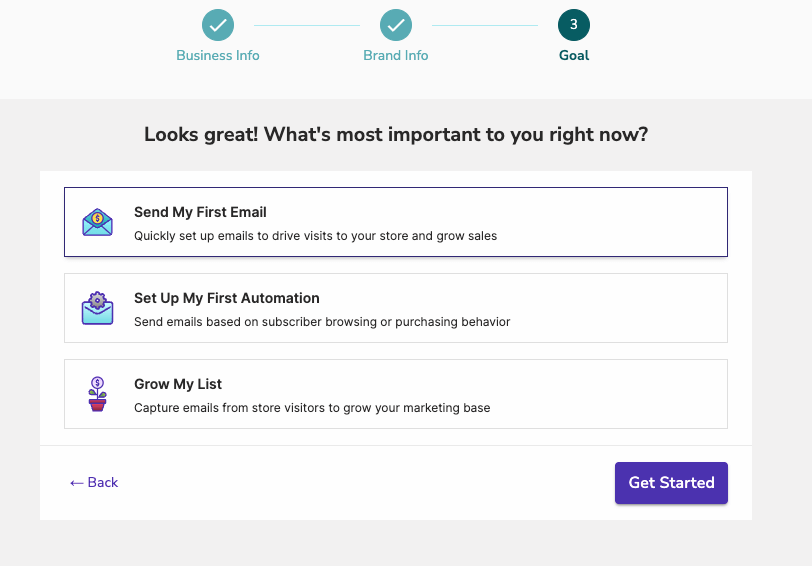
Both Omnisend and Privy are pretty straightforward to use. The signup process is easy, and you won’t need to provide your credit card details for both platforms.
Privy’s settings and menu items are easy to trace, and the user interface is well structured, too. Everything looks modern and visually appealing. The same case goes for Omnisend.
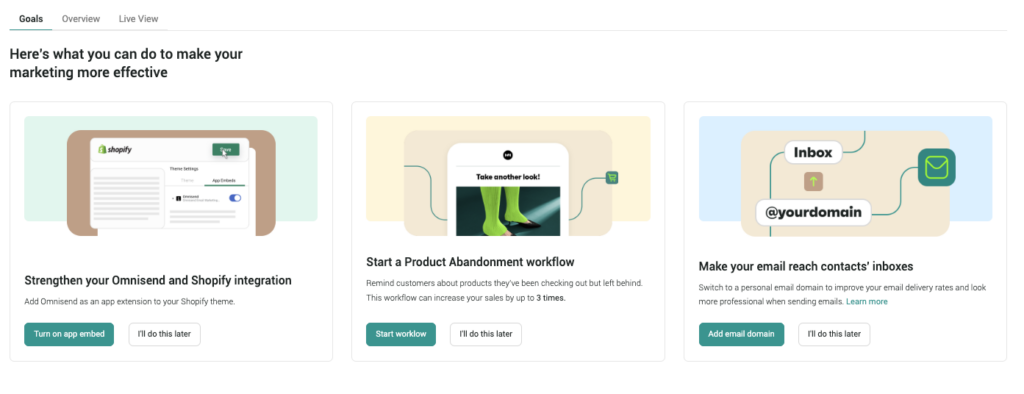
Omnisend also provides clear next steps to make the most out of the platform, which is very convenient for email marketing beginners.
The initial round of Privy vs Omnisend comparison is a tie. Overall, both tools are pretty easy to use.
Building an email campaign
Omnisend vs Privy: How easy is it to build an email campaign?
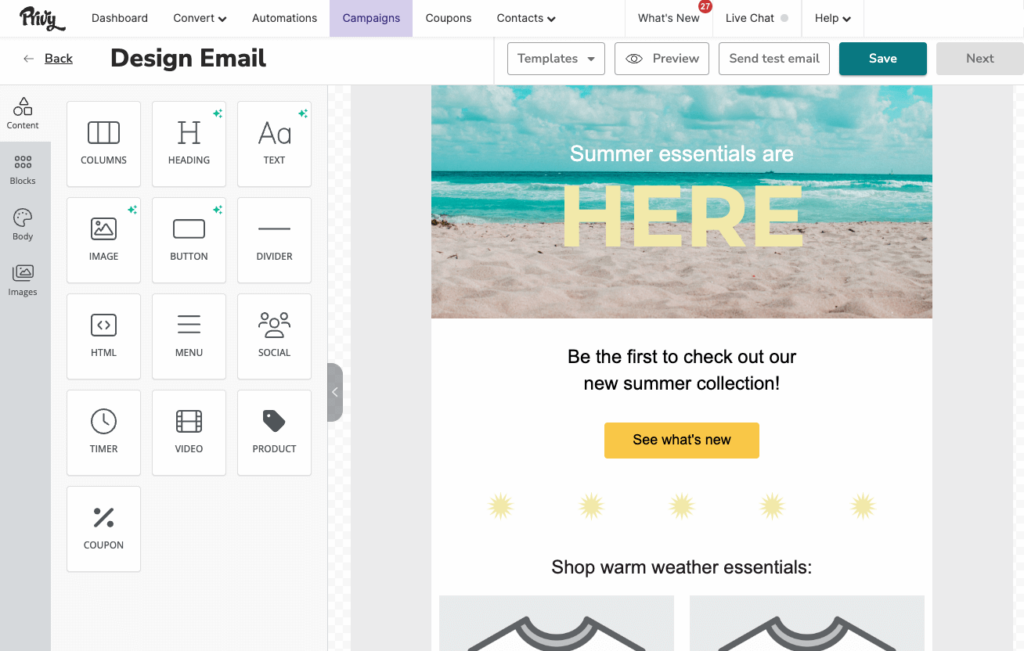
An intuitive email campaign builder is one of the most crucial elements of an email marketing tool. And we’re happy to report that both Omnisend and Privy have done well in this category.
Both platforms’ email campaign builders are intuitive and easy to use as they both use the drag-and-drop technique. Things like adding your logo, and changing email structure are easy using both Omnisend and Privy.
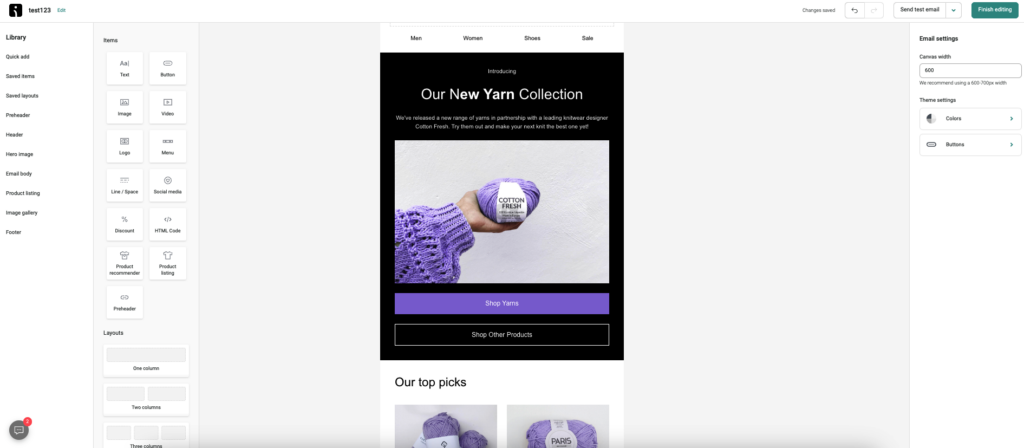
Both platforms have useful content blocks for ecommerce users, including:
- A product block that helps pull product images and descriptions directly into your email. With Omnisend, you can include up to 8 products for every email distributed across four columns.
- Coupon feature to help ecommerce stores offer incentives to their customers via email.
- Other useful content blocks like timer, image, video, social media block, and more.
You can add stock images with Privy, which can help make your emails more visually appealing.
Omnisend also has some unique features which include:
- Inbox preview feature to help you see your campaigns as they appear on the recipient’s device.
- A checkbox feature to help align images and fit them to the same height on your email. This helps with your email’s design.
- A brand asset feature allows you to upload your brand assets like colors and logo, and they’ll be automatically updated on all your templates.
- Product recommendation to help personalize your email campaigns.
- AI-generated email campaigns
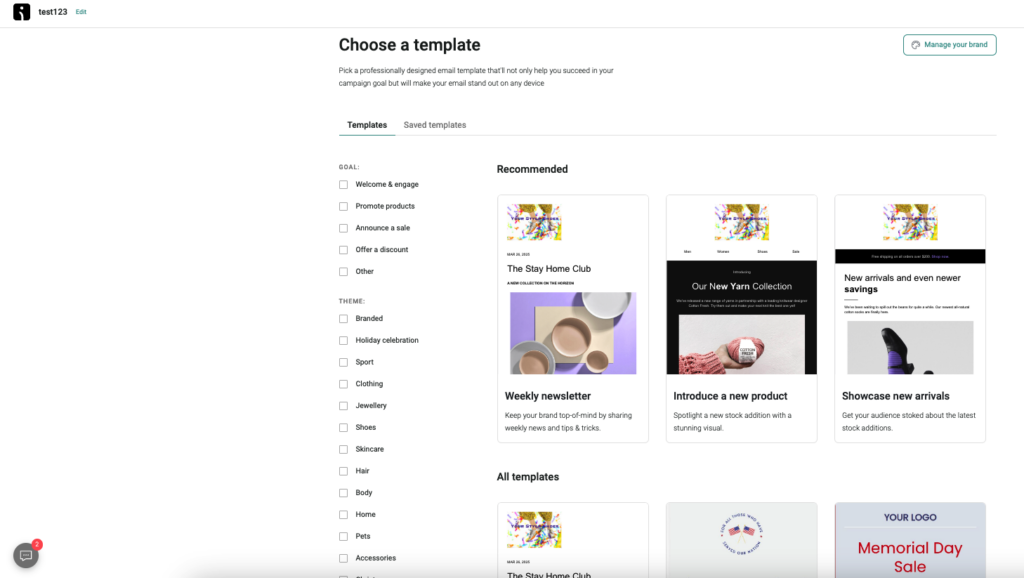
While Privy provides 20 great email templates, Omnisend provides 250+ templates that are modern-looking and cover more occasions.
Also, there’s no direct personalize button on Privy but you can easily personalize your subject line and preheader in your email content.
As far as all the vital email campaign-building elements go, both Omnisend and Privy meet the industry standard.
Omnisend is a clear winner. It offers more features for ecommerce stores and plenty of templates.
Marketing automation
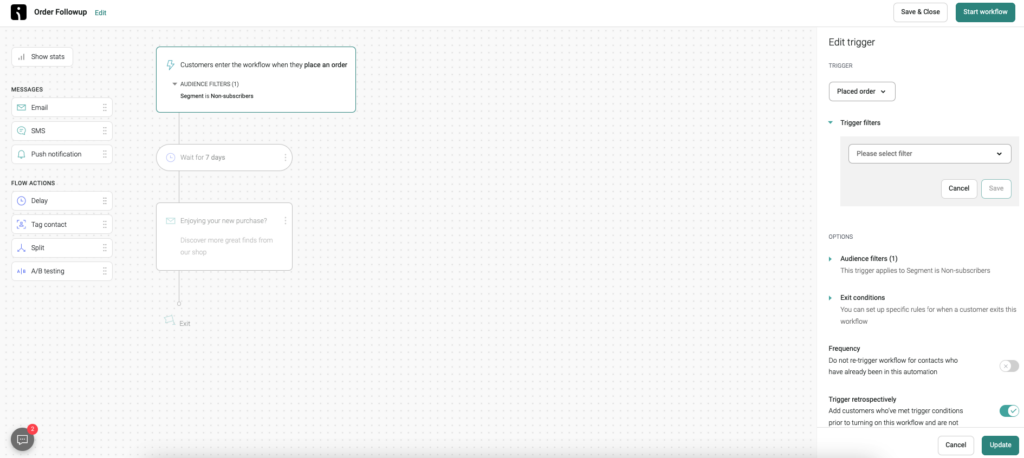
Omnisend’s marketing automation feature is pretty robust. There are plenty of conditions, filters, and triggers for building your customer journeys.
You can also include SMS and push notifications with your automated emails, making it a holistic omnichannel marketing platform.
Privy, on the other hand, has a basic, user-friendly marketing automation feature. It only contains sufficient elements of ecommerce marketing for small businesses or beginner ecommerce marketers.
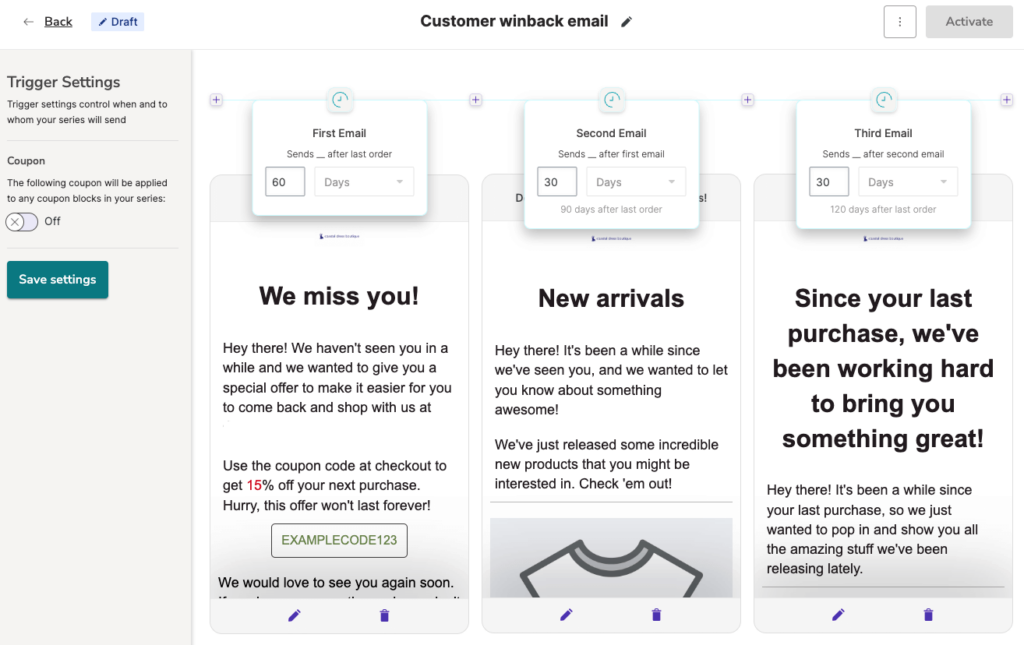
More established businesses would find Omnisend the better option in this category.
Also, while you can send SMS on Privy, the platform can’t combine SMS and emails into a single workflow. The SMS feature is also limited to the highest-tier plan, unlike Omnisend, which is available even on the free plan.
Privy only provides five ready workflows including:
- Welcome emails
- Abandoned cart emails
- Abandoned cart SMS
- Customer win-back emails
- Purchase follow-up emails
Omnisend provides 25 prebuilt automation workflows that you can use out of the box. This means that they contain both the logical flow and email copy. These workflows are beginner-friendly and very easy to customize.
The only downside to Omnisend’s automation feature is that the historical data of advanced reporting is only available for 18 months.
Omnisend wins this round for having more advanced automation workflows and omnichannel capabilities.
Signup forms and landing pages
Privy vs Omnisend, whose list-building features are better?
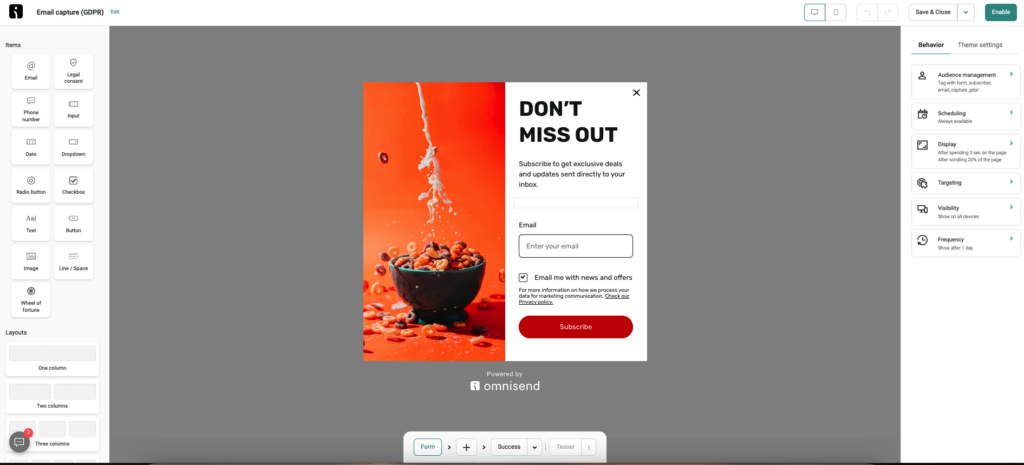
Both platforms have pretty robust signup forms and landing pages and easy-to-use drag-and-drop editors.
Both Privy and Omnisend provide gamified signup forms (“spin the wheel”), a feature that makes these forms more engaging for audiences. Further, they provide many different modern-looking designs, from pop-ups to static forms.

Privy offers around 14 customizable landing page templates you can use out of the box. Omnisend offers six ready-to-use landing pages and over 80 signup forms and landing page templates. These are well-designed and modern-looking.
You can track your list-building reports using both tools.
These include important metrics such as
- The number of views
- Conversion rates
- Sign-ups and more.
With Privy, you can also compare your reports against industry players.
We also found it amazing that Privy converted the best-performing popups from their customer base into ready-to-use plays. Their signup form best practices are also readily available to all customers.
This makes it easy for customers to pick a popup without worrying about setup or any popup settings.
Compared to Privy, Omnisend offers more metrics, like those based on location and demographics. And in case your audience fills out their signup forms twice, their contact will only be counted once.
Is it clear how to manage your list of subscribers? Let’s see how each platform handles list management.
You can import your contacts manually or from platforms like Mailchimp and Klaviyo on both platforms. We found it unique that Privy takes one to two days to review new contacts before uploading them.
While this may cause minor inconveniences, it’s also a security measure to retain the quality of your mailing list.
Both Privy and Omnisend have pretty robust list-building capabilities.
Both platforms offer extended forms’ functionality, but Privy takes the lead in this section.
Segmentation
Omnisend’s segmentation feature is powerful, and you get a full list of criteria even on the free plan.
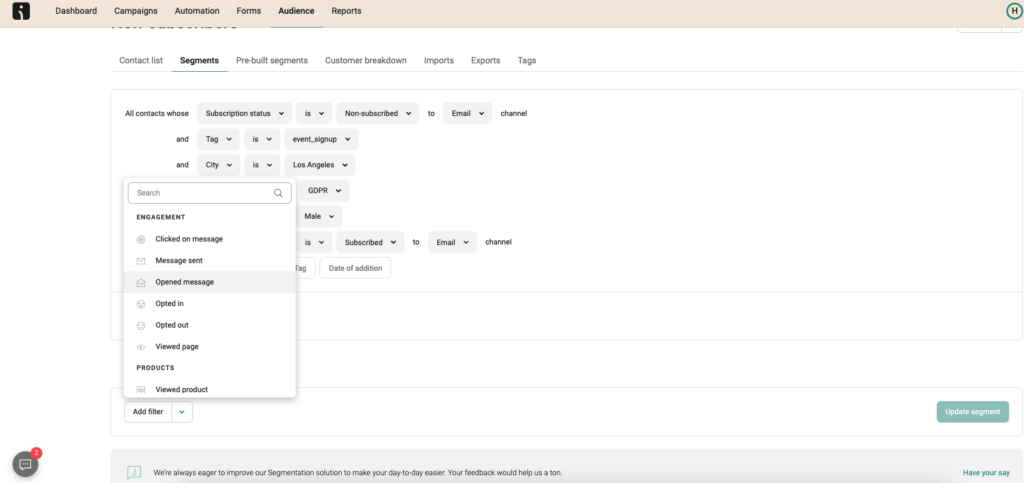
You can segment your audience based on:
- Shopping behavior
- Web browsing activity
- Engagement levels
- Email and SMS campaign activity
- Personal details
- The platform
Omnisend provides 23 prebuilt segments that you can use out of the box. Besides the above segmentation criteria, you can also create lists by adding and removing tags.
The only thing that’s missing from Omnisend’s segmentation is that you can’t create segments based on lifetime value. This is a pretty common criterion among other top email marketing platforms.
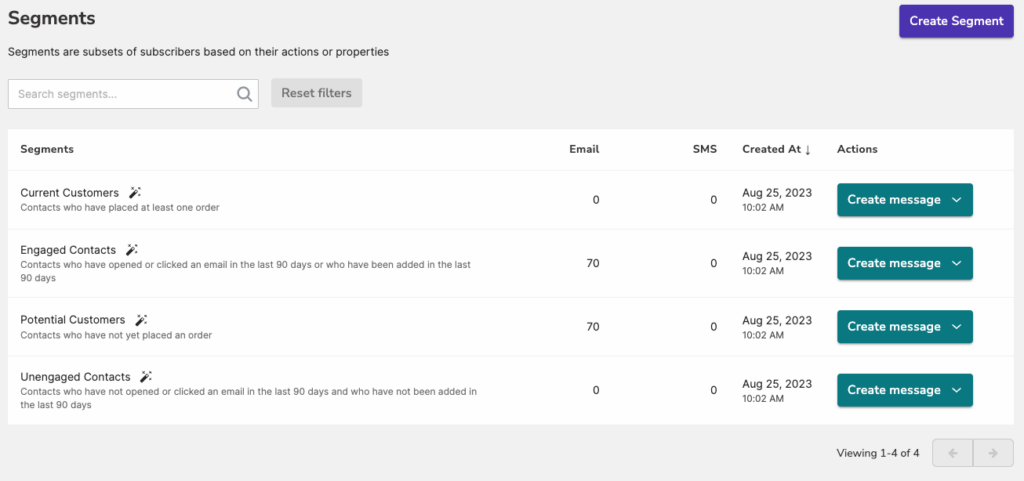
Privy has a great segmentation feature, too, with many segmentation criteria. These include:
- Lifetime spend
- Order value
- Order count
- Website behavior
- Customer details
- Email engagements and more
Privy offers four prebuilt segments, including current, engaged, unengaged, and potential customers. The only missing item is the inability to segment your audiences based on website activity.
Each tool provides pretty robust segmentation options but Omnisend offers more ready audiences and segmentation criteria. So Omnisend wins.
Analytics
Which tool offers more in-depth analytics, Privy or Omnisend?
Both email marketing solutions target an ecommerce audience. However, Omnisend provides more in-depth ecommerce insights compared to Privy.
Here’s what you can track with Omnisend:
- Click map reports
- Open and click rates
- Sales and order stats
- Revenue reports
- Subscribers gained and lost
- Real-time analytics
- Advanced analytics–insights on customer lifecycle stage.
Privy also lets you track key engagement, order, and revenue metrics. However, the ecommerce insights appear pretty limited. For instance, there are no device reports.
Both tools need the geolocation reporting feature that other powerful email marketing tools in the industry have.
Compared to Privy, Omnisend has more robust reporting capabilities, especially for ecommerce businesses. Omnisend wins.
Customer support
Customer support is crucial for every business.
Omnisend excels at customer support and has awards and great reviews to show for it. This is one of the most outstanding qualities of this platform.
Omnisend provides 24/7 live chat and email support for all customers, including the ones on the free plan. We found the estimated response time to be 3 minutes on average, which is pretty impressive.
There is also a lot of additional DIY support material on Omnisend’s website. These include:
- Video tutorials
- Omnisend Academy
- Podcasts
- A resourceful blog
- A help center
The platform, however, lacks phone support.
With Privy, email and chat support are available for paid plans only. The platform also provides one-on-one support for users with 9,000+ email contacts.
Privy also provides valuable resources, including a blog, masterclass videos, and a marketing podcast.
The only downside is that no customer support is available for users on the free plan. Also, many reviews on the Shopify App Store suggest that the customer service is unresponsive.
Omnisend provides great customer service even for their free plan subscribers, giving them an edge over Privy. Omnisend wins this round.
Integrations
Omnisend has a seamless native integration with popular ecommerce platforms like Shopify, Wix, and BigCommerce, just like Privy. However, as for their integrations with other tech stack applications, Privy’s list is pretty limited compared to Omnisend’s.
Besides the three ecommerce platforms mentioned above, Privy only integrates with five more applications: three email marketing platforms (Klaviyo, Mailchimp, and smile.io) and two SMS platforms (Attentive and Postscript).
Omnisend, on the other hand, has 150+ integrations with other useful tech stack apps, including:
- Email capture software like Mailchimp data import software
- Shipping and logistics apps like AfterShip and ShipStation
- Review platforms e.g. Yotpo Product Reviews
- Subscription platforms like Recharge
- Zapier, for unlimited integrations
Omnisend takes the lead, offering numerous integration possibilities with critical ecommerce applications.
Compatibility with other marketing channels
At an extra cost, you can send SMS using Privy. However, as mentioned earlier, the SMS and email functions are not integrated.
This is different with Omnisend.
Omnisend supports integrated marketing for SMS, email, and web push messages. You can integrate them all into a single automated workflow.
Besides, Omnisend is also compatible with other marketing channels, including Facebook retargeting and Google Ads.
Omnisend integrates with more channels, making it the clear winner in this round.
Price Comparison
The final part of this Privy vs Omnisend review is their price comparison.
As far as features go, each tool has its perks and cons; your ultimate choice should depend on your business needs.
However, a crucial part of these needs for most businesses is budget. So which platform is more affordable for you?
Let’s take a look.
Free plans comparison
Both Omnisend and Privy have free plans. Omnisend’s free plan is holistic and offers all the features available on the higher-tier plans with a limitation on the number of contacts and the number of emails you can send.
This way, beginner ecommerce businesses can get the full experience before committing financially.
Privy’s free plan offers limited features for a small contact list, and most advanced features get unlocked on the paid plans.
Here’s a comparison table listing the features you can get on each free plan.
Omnisend’s free plan offers many more features than Privy’s, including access to most of the advanced features that are only accessible on Privy’s paid plans. Now, let’s compare their paid plans.
Paid plans comparison
Each platform has two paid plans. Standard and Pro plans for Omnisend, and Starter and Growth plans for Privy.
Privy’s pricing starts from $30/month while Omnisend’s Standard plan costs $16/month.
Privy is relatively more expensive than Omnisend, and as your contact list grows, the disparity grows, especially for the lower-tier plans. Surprisingly, the gap between the higher tier plans seems to get narrower instead as contact lists grow.
However, if you compare these prices to the value that these tools provide, it’s safe to say that Omnisend offers way more value for your money.
For instance, besides having more robust automation capabilities, Omnisend provides integrated SMS and push notification functionalities. Further, with Omnisend’s Pro plan, the number of free SMS users get is much higher than most tools in the market.
Privy’s SMS functionality is only available on the Growth plan and is a separate feature.
Privy vs Omnisend: Which one wins?
Still wondering which tool is best for your needs? Here’s a quick recap to summarize this Privy vs Omnisend review.
4.8
3.7
500 subscribers – $16
1000 subscribers – $20
5000 subscribers – $65
10 000 subscribers – $115
50 000 subscribers – $330
100 000 subscribers – $720
500 subscribers – $30
1000 subscribers – $30
5000 subscribers – $105
10 000 subscribers – $180
50 000 subscribers – $570
100 000 subscribers – $870
- Reach up to 250 contacts
- 500 emails/month
- Up to 60 SMS
- Up to 500 web push
- Advanced automation workflows
- Unlimited segmentation capabilities
- Gamification of signup forms
- Landing pages
- Up to 100 mailable contacts
- Access to all popup types
- Advanced popup targeting
- Sync with Email Service Providers
- Sync with Shopify coupons
- Limited automation features
- Full reporting
- Robust automation
- Advanced analytics
- Robust segmentation
- Unique, modern-looking signup forms
- Modern looking newsletter templates
- Extended list of signup forms
- Advanced signup forms functionality
- Intuitive email builder and the entire system interface
- Robust segmentation
- Doesn’t provide geopolitical report
- Basic automation
- Can’t combine email and SMS in the one workflow
- Incomplete reporting
- Ecommerce stores of all sizes
- Both beginners and advanced users
- Ecommerce beginners with the focus on growing the contact list
- Bloggers
- Solopreneurs
- Bloggers
- Governmental and non-governmental organizations
- Established ecommerce businesses
- Companies with large contact lists
It’s hard to say which tool is better in your case. So far, we can confidently say that Omnisend is a more robust, more affordable ecommerce marketing platform than Privy.
A decent feature set makes Omnisend suitable for both large and small ecommerce businesses looking to increase sales on their online stores.
Privy, on the other hand, has some limited ecommerce features but would do great for ecommerce businesses looking to build their lists. This is because of its outstanding signup forms, segmentation features, and user-friendly interface.
Ultimately, your decision should be guided by your business’s vital needs, budget, and long-term objectives.
Read full reviews
Our team strives to be accurate and unbiased in reviewing email tools. However, we recognize that mistakes can happen, and it’s essential for us to stay up to date. If you come across any errors or things that need to be reviewed again, please let us know.





Leave a Reply